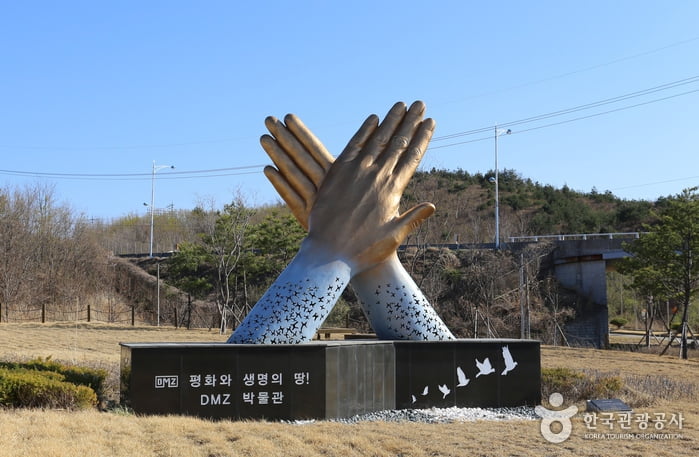Words by Aireanne Hjelle
Encountering the DMZ outside of Panmunjom is often a contextless experience. Confronted with imposing concrete road fortifications and military checkpoints, you arrive at the Tongil Observatory to look upon the four-kilometer span of a no-man’s land and glimpse the edges of North Korea. The trip leaves you with a heightened sense of urgency regarding current North and South Korean relations, but little idea of how the DMZ came to be.
The DMZ Museum
Into this void, the DMZ Museum in Goseong-gun, Gangwon Province seeks to illuminate the history and present conditions of the Demilitarized Zone. Opened in 2009, the building is a large, modern structure, utilizing museum design theory to both display artifacts excavated from Korean War battle sites and to evoke the experience of living and fighting during the war. As visitors wind their way through the exhibits, they travel in time from the first provocations of the war to the signing of the Armistice, through the sounds of gunshots and prison bars rattling.
The DMZ Museum displays more than just the historical facts of the DMZ’s creation. It also includes an informative section on skirmishes between North and South Korea since the Armistice, a large scale model of the DMZ, and a section devoted to the area’s half-century of ecological recovery featuring some of the species that have flourished in this untouched region. There is also a special exhibition of North Korean propaganda from both during and after the Korean War.
Designed during President Kim Dae Jung’s term in office, the museum is infused with the hopeful rhetoric of the Sunshine Policy era. While its main audience appears to be domestic Korean tourists, there is a multitude of information available in English.
The museum is located two kilometers south of the Tongil Observatory and 60 kilometers north of Sokcho via Route 7. It can only be accessed with a personal or chartered vehicle. Admission: W2,000 per person. Closed Mondays. For more information, visit www.dmzmuseum.com




